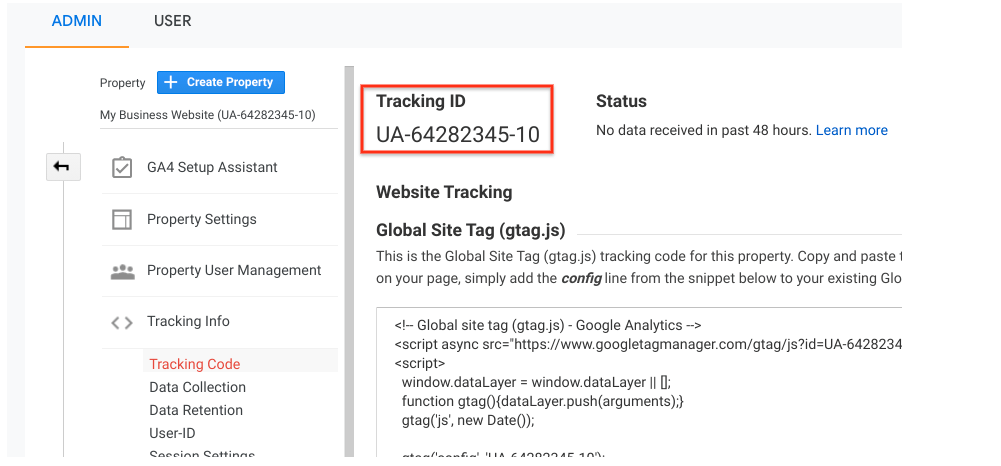Dive into Analytics: What Data Does Google Analytics Prohibit Collecting?
Dive into Analytics: What Data Does Google Analytics Prohibit Collecting?
Blog Article
Navigating the Complexities of Data Collection Limitations in Google Analytics: What You Required to Know
In the world of electronic analytics, Google Analytics stands as a foundation device for businesses to glean insights into their on the internet performance. Nevertheless, underneath its seemingly straightforward user interface lie complexities that can impact the accuracy and reliability of the data it provides. Comprehending the complexities of information collection limitations in Google Analytics is critical for making notified decisions based upon the understandings derived from the platform. As services aim to take advantage of information for strategic growth and efficiency optimization, recognizing these restrictions becomes not just beneficial but critical.
Information Disparities in Google Analytics
Sometimes, data inconsistencies may develop in Google Analytics, demanding a detailed understanding of the platform's complexities to successfully address and fix these inconsistencies. These discrepancies can originate from numerous sources, such as execution problems, data sampling, filters, and even crawler web traffic. One common reason for data incongruities is inconsistencies between data gathered using JavaScript monitoring code and data imported from other sources like Google Ads or Search Console.
To attend to these discrepancies, it is critical to first perform an extensive audit of your tracking arrangement. Validate that the monitoring code is correctly carried out on all web pages, check for any filters that could be changing the information, and make sure that there are no redirects or other technical concerns disrupting information collection. Additionally, acquaint yourself with usual risks, such as cross-domain monitoring mistakes or misconfigured objectives.
Tracking Difficulties and Solutions
Provided the complexities of data inconsistencies that can occur in Google Analytics, dealing with monitoring challenges and applying reliable services becomes critical for making certain trustworthy and precise data evaluation. One typical monitoring difficulty is accurately tracking cross-device and cross-platform customer communications. Customers today engage with sites and applications across various tools and systems, making it testing to connect activities to a single user properly. To overcome this, executing individual ID monitoring can assist link interactions throughout various devices under one user identifier, supplying a more alternative sight of user behavior.
Another monitoring obstacle stems from advertisement blockers and privacy guidelines, which can hinder the collection of precise information (What Data Does Google Analytics Prohibit Collecting?). Solutions to this consist of executing server-side tracking, which bypasses client-side restrictions, and appreciating user privacy choices by offering clear opt-in mechanisms for data collection

Understanding Experiencing in Records
Experiencing in records gives an approach for analyzing big datasets successfully while preserving statistical value. In Google Analytics, tasting happens when the volume of data quized surpasses a particular limit, causing the system assessing just a section of the data to provide insights. While tasting can speed up record generation and decrease handling demands, it is critical to understand its ramifications on the accuracy and reliability of the outcomes.
When dealing with experienced data, it's vital to think about the potential margin of error that might arise due to examining just a subset of the complete dataset. The accuracy of the understandings stemmed from sampled reports might vary, and users should interpret the findings with caution, especially when making data-driven choices based on these records.
To navigate sampling in Google Analytics successfully, customers can check out choices such as changing the sampling degree, using custom-made record configurations, or leveraging Google Analytics 360 for greater information limitations and more precise coverage capabilities. By understanding the nuances of sampling in reports, users can make educated choices and draw trustworthy final thoughts from their data analysis efforts.
Influence of Cookie Deletion on Information

Furthermore, cookie removal can alter group and rate of interest data, as Google Analytics depends on cookies to classify customers based upon their surfing patterns. Without this info, marketing experts might struggle to produce targeted campaigns that reverberate with their audience. To minimize the influence of cookie removal, services can motivate customers to opt-in for data monitoring, make use of various other monitoring techniques like individual IDs, and on a regular basis keep an eye on information disparities to make sure information integrity in Google Analytics.
Enhancing Information Precision With Filters
To improve the accuracy and dependability of data in Google Analytics, implementing filters is a crucial method for boosting information accuracy. Filters enable customers look at more info to sift through and improve the data accumulated, making sure that only relevant and exact information is consisted of in the analysis. By setting up filters, users can leave out interior web traffic, spam recommendations, or any type of other unimportant information that may alter the outcomes. This process assists in supplying a much more precise depiction of individual behavior on a web site, resulting in better-informed decision-making.
Filters not just assist in leaving out unwanted information however also permit the personalization of sights to concentrate on particular segments or patterns of user interactions. Filters can be used to consist of or omit web traffic from particular geographical areas, devices, or specific web site pages. This level of personalization improves the precision of the data being assessed, giving more valuable understandings for optimizing internet site performance and marketing methods. In final thought, making use of filters in Google Analytics is important for improving data precision and ensuring that notified decisions are made based upon reliable details.
Conclusion
In conclusion, navigating the intricacies of data great post to read collection constraints in Google Analytics needs a deep understanding of information disparities, tracking difficulties, tasting in records, the effect of cookie deletion, and the use of filters to enhance information precision. By resolving these challenges and making use of appropriate remedies, companies can ensure the integrity and accuracy of their information evaluation for notified decision-making.
One common factor for information variances is disparities in between information gathered using JavaScript monitoring code and data imported from various other resources like Google Ads or Browse Console. What Data Does Google Analytics Prohibit Collecting?.
Given the complexities of information discrepancies that can emerge in Google Analytics, resolving monitoring challenges and carrying out effective services ends up being vital for making sure exact and dependable data analysis. In Google Analytics, sampling occurs when the volume of information queried goes beyond a specific threshold, leading to the system assessing only a portion of the information to give insights. To reduce the impact of cookie removal, services can encourage individuals to opt-in for information tracking, utilize various other monitoring approaches like user IDs, and regularly keep track of information discrepancies to make certain data honesty in Google Analytics.

Report this page